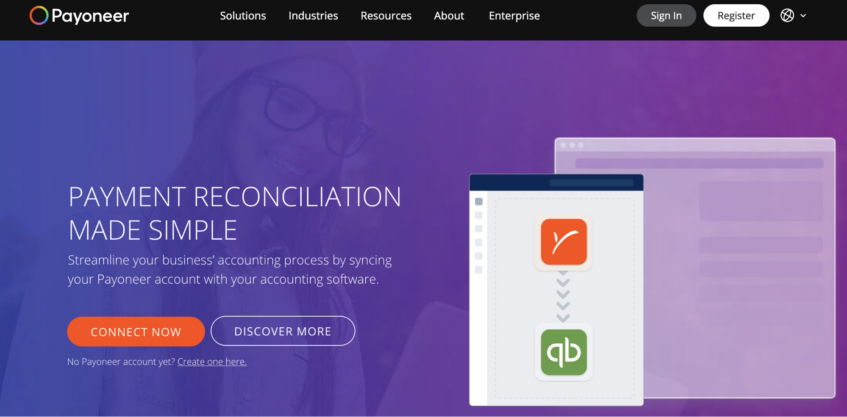
How to use ACoS marketing for your business
ACoS – What is ACoS marketing and how is it calculated?
Editor’s note: This guest post was written by Shai Venezia, co-founder of PPC Winner
Navigating the ecommerce world can sometimes feel like decoding a complex secret language. One term that frequently surfaces is Advertising Cost of Sales, commonly known as ACoS. If you’ve found yourself puzzled by what it means and why it matters, you’ve landed at the right place. Welcome to our comprehensive guide, where we demystify ACoS marketing and help you leverage it to fortify your advertising strategy.
Intro to ACoS: What exactly is it?
Let’s start with the basics. Advertising Cost of Sales (ACoS) is a term that measures the effectiveness of sponsored ads. Simply put, it is the ratio of ad spend to targeted sales or how much you spend on advertising per dollar of revenue earned.
Imagine being an adventurer on a treasure hunt, where your treasure is profitable sales. The map to this treasure is ACoS. It helps you measure how well your Sponsored Product campaigns perform on platforms like Amazon, eBay, and others. Think of it as the compass pointing towards successful advertising strategies.
Understanding ACoS is straightforward. Subtract your ACoS percentage from your product’s profit margin percentage to find your final margin. So, if you’re selling a product for $40 with a profit margin of 40% ($16) and your ACoS is 10% ($4), your profit from ad sales is $16 – $4.
As the wise aphorism goes, “You got to spend cash to make cash.” In this context, savvy sellers use various target ACoS metrics for different products to enhance their sales capacity.
Deconstructing the Cost of Sales: Is advertising a part of it?
Picture your business as a machine that transforms raw materials into revenue. The cost of these raw materials, directly linked to every sale, constitutes the Cost of Sales (CoS). Indirect line-item expenses, such as legal and accounting fees, are necessary to operate your business but aren’t directly tied to revenue generation.
Advertising costs have historically been seen as ambiguous, often cut during tough economic times. However, by linking advertising directly to anticipated demand, you turn this often-overlooked expense into a catalyst for revenue creation, thereby transforming it into a Cost of Sales.
ACoS marketing is a reality for most search engine marketers. They precisely understand the correlation between a dollar spent on advertising and the generated revenue. With auction-based pricing and centralized liquidity, every advertiser can now effectively participate in this arena.
Ready to start receiving international business payments?
The ACoS formula: Making sense of the numbers
ACoS is undoubtedly a critical tool for determining profitability but it requires precise calculation and interpretation. Here’s how you can calculate your ACoS:
ACoS = 100 X (Total Ads Spend ÷ Total sales)
For instance, if your advertising expenditure is $100, resulting in a single sale of $400, your ACoS would be 100X(100/400) = 25%.
The higher your ACoS, the higher your ad cost-to-sales revenue ratio, and vice versa. Ideally, you’d want your sales revenue to skyrocket with the ACoS as low as possible.
Embracing the complexity: Using ACoS effectively
Understanding ACoS marketing is straightforward, but things can get tricky when you try to determine whether an ACoS marketing metric is good or bad. After all, why is an ACoS of 50% considered good sometimes and not at other times? This apparent complexity can lead to confusion and potentially harmful decisions.
Our purpose is to banish the bewilderment around ACoS and equip you with the knowledge to calibrate the correct advertising cost of sales for your unique product. Understanding how to calculate your ACoS, determine your marketing strategy, and apply this information to your paid advertising campaigns is crucial in harnessing the power of ACoS.
We believe ACoS isn’t a mystery to be feared but a tool to be mastered. Once understood and used correctly, it could be your winning ticket in e-commerce advertising. Here’s to driving profitable sales and scaling new heights with effective ACoS marketing in your arsenal.
A closer look at the ACoS formula: The key to optimal advertising spend




It’s often said that numbers don’t lie, and this adage holds remarkably true in the realm of e-commerce. Our journey into Advertising Cost of Sales (ACoS) inevitably brings us to the number-crunching phase: understanding the ACoS formula.
Let’s deconstruct the ACoS formula with a real-life example:
- Imagine your product retails for $100.
- You embark on an advertising campaign, investing $380.
- Your campaign success leads to the sale of 10 products, garnering a total revenue of $1000.
Calculating your ACoS is a simple math exercise: divide your total ad spend ($380) by your total sales through these ads ($1000). In this scenario, you end up with an ACoS of 38%.
While this understanding is necessary, to truly capitalize on this data, you must compute your breakeven ACoS – the percentage point where your advertising spend matches your profit margin.
Now, you might be wondering what the profit margin is. Your profit margin represents the remainder after deducting all your expenses from your revenue. It considers all costs, including taxes, fees, manufacturing, transportation, and other product-specific considerations, such as damages.
Let’s illustrate this with an example:
- You’re selling your product at $100.
- It costs you $10 to manufacture your product.
- Additional costs for transport, packaging, taxes, and fees amount to $40.
In this case, you subtract your total expenses ($50) from your gross revenue ($100), leaving you with a profit margin of $50.
Finally, to work out your breakeven ACoS, divide your profit margin ($50) by your gross revenue ($100) and multiply the result by 100. Here, your breakeven ACoS would be 50%.
At this point, the power of understanding ACoS marketing truly starts to unfold. This is where the game gets thrilling, and every detail matters. These calculations guide you to making more informed decisions, ultimately saving you money and elevating your advertising strategies. So, let’s continue to dive deeper into this fascinating world of ACoS.
Unveiling the breakeven ACoS & how to optimize it


Getting down to the brass tacks of advertising costs and revenue, we get to a pivotal point called Breakeven ACoS. It represents the threshold where your advertising spend matches your profit margin, leading to neither profit nor loss. This concept answers the intriguing question: “What ACoS leads to a perfect balance of zero profit and zero loss?”
To illustrate this, let’s walk through an example. Suppose you have a product with a production cost of $60, and it’s sold at $200. Ecommerce platform fees for this product stand at $30. The pre-advertising profit per sale is $110, calculated as sales price ($200) minus production cost ($60) and the ecommerce platform’s fee ($30).
If you decide to invest this entire $110 into advertising to boost sales, based on the ACoS formula, we get an ACoS of 55% ($110/$200). At this point, you’re at breakeven. If your ACoS is under 55%, you’re making a profit. But, if it’s above 55%, you’re dipping into losses.
Calculating your Break-even ACoS is instrumental in setting your Target ACoS. Remember, a satisfactory ACoS depends on your profit margin and your brand’s visibility before your ad campaign.
The art of deciphering a positive ACoS

When understanding what a positive ACoS percentage looks like, it’s necessary to factor in your product’s cost structure and overarching marketing strategy. For instance, if you’ve spent $25 on advertising to generate $80 in sales, your ACoS stands at 31.25%.
Exploring costs
By delving into your product’s cost structure and determining your profit margin percentage, you can subtract the ACoS to derive your effective margin. If your advertising spend exceeds your profit margin, your Sponsored Product (SP) campaigns will not lead to losses. The golden rule here is: to aim for high sales revenue with as low an ACoS as possible.
Marketing initiatives
The marketing strategy you adopt also plays a outsized role in determining whether a particular ACoS is favorable. An ACoS of 25% may be great if your objective is to bolster sales volume to sell as many units via SP ads without incurring losses. This tactic is commonly adopted for new products. Conversely, this strategy might not be suitable if your goal is profit maximization.
Another strategy involves leveraging SP campaigns to maximize profits, often employed when a product has already established good organic rankings. Thus, your campaign’s strategy should be the guiding factor for either the breakeven ACoS or the target ACoS calculation, providing you with a solid basis to assess the effectiveness of your ACoS.
Ready to start receiving international business payments?
Nailing ACoS maximization: Top tips
Stay the course
If you’re merely breaking even on ads, don’t be disheartened. The extra sales can boost your Best Seller Rank (BSR), increasing organic sales. Though it might seem tempting, avoid sudden changes until you’ve gathered around 200 clicks for reliable data.
Maintain accurate records


When selling on Amazon, eBay, Alibaba or others it’s crucial to have a comprehensive spreadsheet where you note all your costs, including manufacturing, inspection, shipping, import tax, and Amazon fees. This helps you understand your profit per sale and the amount you can allocate toward paid ads without compromising profitability.
A 3-step guide: Mastering your marketing strategy
Step #1: Establish marketing strategy!


Kick-starting your journey to a successful product launch means laying the foundation of your target ACoS. Doing so requires clarity on your advertising objectives. Contrary to popular belief, not all advertising is designed for immediate profit, and it’s perfectly normal to accept a high ACoS or even a loss in the initial phase.
This is particularly relevant when dipping your toes into the business world, focusing on product launches, and nurturing brand awareness. Here’s where the classic saying holds – you must invest to become the best.
Step #2: Boost visibility with sponsored ads


After months of relentless work, meticulous research, and significant investment, your product is ready for the Amazon marketplace. But where’s the anticipated deluge of customers? Perhaps they’re unaware of your presence or can’t find you amidst similar offerings.
This is when sponsored ads are a beacon to guide customers to your product. While your ultimate aim should be enhancing organic rankings, your immediate focus should be driving sales through Pay-Per-Click (PPC) ads and elevating your brand profile.
At this stage, you aim to seize prime real estate on the first page for all essential category keywords. This might inflate your ACoS, but the visibility gained makes it a worthwhile investment. The perks of this strategy surpass any short-term losses.
PPC ads introduce your product to the Amazon algorithm, helping you decode which keywords or phrases Amazon leverages to showcase your product. This serves as a guide for promoting organic sales.
If your product appears in irrelevant searches (think: your meat mallet appearing in searches for hammers), it’s a red flag that your listing needs refining. Don’t worry; a tweak in your backend search terms will get you back on track.
Expect a surge in sales and potentially a higher ACoS than your breakeven point. Cause for concern? Far from it! This exposure on Amazon is an integral part of your master strategy!
Step #3: Tailor strategy to product


So, when should your ACoS marketing efforts align with the breakeven point or dip below? We’ve established that a high ACoS is normal initially, but what about an established store?
Imagine your product is performing well organically under specific keywords, and you’re enjoying prime page-one positioning. Now’s the time to aim for an ACoS at breakeven or lower because your sights are set on profits!
On the flip side, a high ACoS could be both unavoidable and beneficial for a product you need to liquidate. If your products are gathering dust in storage, absorbing the loss and channeling efforts into clearing inventory is probably more advantageous.
Ready to take the leap?


The team at PPC Winner is here to assist you on this journey. They will assist you in curating an optimal target ACoS, ensuring that your bids on keywords are strategic and preventing the wastage of your advertising budget. Let’s set the wheels in motion!


Shai Venezia is PPC Winner’s co-founder and an online advertising expert.
Ready to start receiving international business payments?




